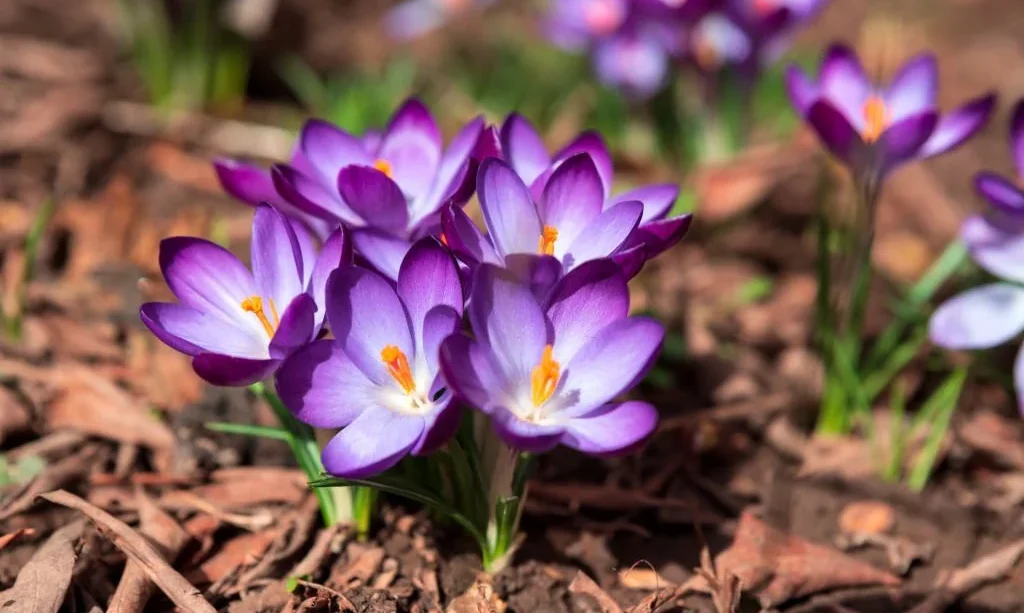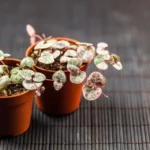As the winter months start to fade away, March brings a renewed sense of excitement for gardeners. It’s a time when the earth awakens, and the opportunity to plant beautiful flowers begins. In this simple guide, we’ll explore the benefits of planting flowers in March and the joy it can bring to your garden. Whether you’re a seasoned gardener or just starting out, March is the perfect time to get your hands in the soil and watch nature’s beauty unfold.
Benefits of Planting Flowers in March
Planting flowers in March offers a range of benefits that contribute to a successful and vibrant garden. Here are a few reasons why March is an ideal time to plant:
- Favorable Weather: March provides the perfect balance of cooler temperatures and increasing daylight hours. It’s a time when the soil is starting to warm up, creating an optimal environment for seeds and seedlings to establish themselves.
- Early Start to the Growing Season: Planting flowers in March gives them a head start. They have ample time to develop strong root systems and adapt to their surroundings before the warmer months arrive. This early start sets the stage for robust growth and abundant blooms later in the season.
- Extended Blooming Period: By planting early in the year, you’ll enjoy the benefits of longer bloom times. Flowers planted in March have more time to establish themselves and produce a continuous display of colors and fragrances throughout the spring and summer.
- Greater Availability and Variety: Garden centers and nurseries are well-stocked with a wide variety of flowers in March. You’ll have plenty of options to choose from, allowing you to create a garden that reflects your personal style and preferences.
- Satisfaction and Wellbeing: Gardening itself brings a sense of satisfaction and connection with nature. Planting flowers in March allows you to participate in the process of growth and witness the transformation of seeds into beautiful blooms. It provides an opportunity for relaxation, stress relief, and the joy of nurturing living things.
By taking advantage of the benefits of planting flowers in March, you’ll set the stage for a flourishing garden that brings beauty and happiness to your outdoor space. In the following sections, we’ll explore the types of flowers that are ideal for planting in March. Get ready to make your garden burst with color and life!
- A stunning mix of yellows, reds and pinks with lots of bi-colors
- 50 LARGE bulbs – 12cm in circumference or larger!
- In zones 3-7, plant in the fall or early winter; warmer zones will need to prechill the bulbs first
- Blooms in the spring – typically April and May
- You will receive all Darwin Hybrid tulips the type that many call the “perennial tulip”
Early Spring Bloomers
In March, the garden comes alive with the vibrant colors of early spring bloomers. These resilient flowers are a delight to behold and add a burst of color to your garden. Here are some popular early spring bloomers:
- Daffodils: Known for their cheerful yellow or white flowers, daffodils symbolize the arrival of spring. They are hardy, low-maintenance flowers that thrive in various soil conditions.
- Tulips: Tulips offer a stunning array of colors and shapes, ranging from bold and bright to delicate pastels. They come in early, mid, and late-season varieties, ensuring a prolonged bloom period.
- Crocuses: Crocuses bring a splash of vibrant colors, including purple, yellow, and white, as some of the first flowers to emerge in spring. They are perfect for naturalizing in lawns or brightening up garden beds.
- Pansies: Pansies are beloved for their charming “faces” and an array of colors, from deep purples and blues to soft pinks and yellows. They are cool-season flowers that tolerate chilly temperatures well.
These early spring bloomers are sure to bring joy and a sense of renewal to your garden as they usher in the new season.
Cool-Weather Annuals
Cool-weather annuals are a fantastic choice for planting in March. They thrive in the transitional weather and continue to bloom until the arrival of warmer temperatures. Here are some popular cool-weather annuals:
- Snapdragons: With their vibrant and spiky flowers, snapdragons add vertical interest to your garden. They come in various heights and colors, and their blooms attract pollinators.
- Calendula: Calendula, also known as pot marigold, offers cheerful yellow or orange flowers that brighten up any garden. They are easy to grow and make excellent companions for vegetable gardens.
- Sweet Peas: Sweet peas are known for their delightful fragrance and delicate, ruffled blooms in a range of pastel hues. They can be grown vertically with support or used as ground cover.
- Violas: Violas, also known as Johnny jump-ups, are small, charming flowers with faces similar to pansies. They come in a variety of colors and are perfect for containers, borders, or as a ground cover.
By planting cool-weather annuals in March, you’ll enjoy a beautiful display of flowers that can withstand the lingering chill of early spring.
In the next sections, we’ll explore perennials and native flowers that can be planted in March to enhance the beauty of your garden. Get ready to create a blooming oasis!
- This dragon looks like it might really snap. A wonderful heirloom reselected for modern vigor and bloom power, ‘Black Prince’ Snapdragon is a glorious snapdragon with blooms of darkest crimson and bronzy foliage that complements the fresh greens of the spring or fall garden beautifully.
- The blooms arise on long, dense stalks, faintly redolent of cinnamon and so showy. ‘Black Prince’ Snapdragon plants reach 18 inches tall and about 12 inches wide in the garden—a great size for the bed, border, or even edging.
- If you have never “snapped” a snapdragon, here is how to do it: You’ll notice that the blooms form two separate cupped clusters that meet in the middle, like jaws. Gently squeeze the sides of the jaws, and the two clusters will separate, just like a mouth opening. The space is just the right size for a child’s finger to poke into the dragon’s mouth. Release the bloom and the jaws “snap” closed.
- Black Prince’ Snapdragon Seeds may be direct sown or started indoors for earlier blooms. Snaps are cool-season annuals that bloom in spring and fall in warm areas, summer in colder climates. In very warm locations they may winter over if mulched. They do best in full sun to light shade.
Perennials for Long-Term Beauty
When planting flowers in March, it’s worth considering perennials that will bring long-term beauty to your garden. These enduring plants return year after year, adding depth and character to your landscape. Here are some popular perennials to consider:
- Daylilies: Daylilies are known for their stunning flowers that come in a wide range of colors. They are low-maintenance and can tolerate various soil conditions, making them a popular choice for gardeners.
- Coreopsis: With their bright yellow or orange daisy-like blooms, coreopsis adds a cheerful touch to any garden. They are drought-tolerant and attract pollinators, making them a beneficial addition.
- Phlox: Phlox offers clusters of fragrant flowers in vibrant shades of pink, purple, and white. They thrive in full sun to partial shade and are excellent for attracting butterflies to your garden.
- Coneflowers: Coneflowers, also known as echinaceas, feature bold and colorful flowers with a prominent cone-shaped center. They are not only beautiful but also attract bees and butterflies, supporting pollinator populations.
By incorporating perennials into your garden, you create a lasting foundation of beauty that requires minimal effort to maintain.
- Beebalm
- Pollinator
- Easy to Grow Perennial
Native and Wildlife-Friendly Flowers
Planting native flowers in March not only enhances the beauty of your garden but also supports local ecosystems and wildlife. These flowers have adapted to the local climate and are beneficial for native pollinators. Here are some native and wildlife-friendly options:
- Black-Eyed Susans: Black-eyed Susans are native wildflowers with vibrant yellow petals and a dark center. They attract bees and butterflies and are excellent for adding a pop of color to your garden.
- Purple Coneflowers: Purple coneflowers are not only visually appealing with their pink-purple petals but also provide nectar for butterflies and bees. They are a staple in wildlife-friendly gardens.
- Bee Balm: Bee balm, also known as Monarda, produces vibrant, tubular flowers that attract bees, hummingbirds, and butterflies. They come in various colors and add a touch of whimsy to your garden.
- Butterfly Weed: As the name suggests, butterfly weed is a favorite of butterflies, attracting them with its bright orange flowers. It’s also a host plant for monarch butterfly larvae.
By planting native and wildlife-friendly flowers, you contribute to the preservation of local ecosystems and create a haven for beneficial insects and birds.
In the next section, we’ll discuss important considerations for successful planting in March. These tips will help you make the most of your gardening endeavors. Get ready to create a vibrant and thriving garden!
Considerations for Planting in March
As you embark on your March planting journey, it’s essential to keep a few considerations in mind to ensure success. Here are some important factors to consider:
- Soil Preparation: Before planting, ensure your soil is well-prepared. Clear any weeds or debris and amend the soil with organic matter to improve its structure and fertility.
- Watering Needs: While the soil may be moist in March, it’s crucial to monitor the moisture levels and water your newly planted flowers as needed. Aim for consistent moisture without overwatering.
- Planting Locations: Consider the sunlight requirements of each flower variety and choose appropriate planting locations accordingly. Some flowers prefer full sun, while others thrive in partial shade. Be mindful of these preferences to ensure optimal growth.
- Spacing and Companion Planting: Provide adequate spacing between plants to allow for proper air circulation and growth. Companion planting can also be beneficial, as certain flowers can enhance each other’s growth and deter pests.
- Follow Planting Instructions: Different flower varieties have specific planting instructions regarding depth, spacing, and care. Read and follow these instructions carefully to ensure the best outcomes for your plants.
By taking these considerations into account, you’ll set the stage for a successful and thriving garden.
- Miracle-Gro Potting Mix feeds container plants for up to 6 months – for more blooms for more color (vs. unfed plants)
- This potting soil mix Grows Plants Twice As Big. (vs. unfed plants)
- Use this home gardening product with all types of container plants, including flowers, vegetables, shrubs, annuals, and perennials
- To apply this potting medium, fill a container about 1/3 full with potting mix, place your plant in the soil, and fill the rest of the pot, pressing lightly
- This bundles includes two 16 qt. bags of Miracle-Gro Potting Mix, each able to fill one 12-inch container (exact amounts may vary based on root ball size)
Conclusion
Planting flowers in March is an exciting opportunity to bring color, beauty, and life to your garden. With the benefits of favorable weather, an early start to the growing season, and an extended bloom period, March offers the perfect conditions for planting a variety of flowers.
Whether you choose early spring bloomers, cool-weather annuals, perennials, or native and wildlife-friendly flowers, each selection adds its unique charm to your garden. By considering soil preparation, watering needs, planting locations, and following specific instructions, you’ll give your flowers the best chance to flourish.
As you dig your hands into the soil, remember that gardening is a journey of patience and joy. Embrace the process of nurturing and witnessing the transformation of your garden. Take pleasure in the beauty and fragrance that will surround you as your flowers grow and bloom.
So, grab your gardening tools, select your favorite flowers, and start planting in March. Enjoy the rewards of a vibrant and flourishing garden that will bring you joy and inspiration throughout the seasons.








